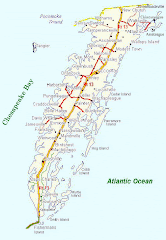Over the past few months I have
taken time out of my practicing for a roadside sobriety test, to watch more
television.
Part of our household’s watching
habits include police shows. There are programs
that show cops attempting to stop speeders of negligent drivers cruising about
without license plate lights, shows that stop people from driving inebriated,
and those programs compiled with dash-cam videos in all sorts of post-stop
shenanigans.
No matter what form we watch,
though, the cops enjoy using cryptic vocal communications such as 10-7, 10-62,
and 10-79.
Not being a cop, I have little
clue as to what most of those codes mean, and my sainted wife is even more at
sea.
 |
| Highway Patrol with Chief Dan Matthews |
In those police cars, were radios
looking as though they came straight out of the Egyptian pyramids. They were a version of a black Bakelite
telephone receiver which required the speaker to gaze off into the sky while
talking.
Sentences were in the variety of,
“10-17 10-20 Spongecake Highway
I learned 10-4 means “Okay”; 10-3
is “Stop transmitting”; 10-7 is “Out of service”; 10-20 represents “Location”;
and 10-95 is “Subject in custody.”
Sure, all this seems puzzling to
the police novice, but years of practice allowed me to learn these codes, much
in the same vein as one would learn French.
My sainted wife, however, is too
impatient to use a learning curve to make watching these police programs more
informational and enjoyable.
Our conversation throughout is
usually, “What did he say?” or, “Is he going for doughnuts?”
Even more confusing is the next
level, the Eleven Code. Ten Codes are special;
Eleven Codes are even more special. I’m
not even going to breach the “Code Signals.”
No kidding.
In full disclosure, these codes
have been in use since the police radio systems began use in the 1920’s. This was an effort to abbreviate yakking on
the radio, and make messages more concise, while hopefully eliminating
confusion.
While this tack may be helpful to
police, fire, and EMS personnel, it is
generally baffling to civilians seeking emergency news via radio scanners, and
watching television shows incorporating them in their storylines.
But here’s the rub. These codes, although used by police
departments nation-wide, are not standardized.
Very often the codes used by
local police agencies are different from those used by the state police, EMS , and even the local sheriff.
So, in theory, all this code
business is better than dry socks on a wet day.
Still, it is not standardized which could possibly lead to terrible
miscommunication in critical and dire situations.
10-7.



